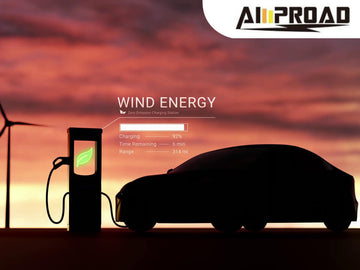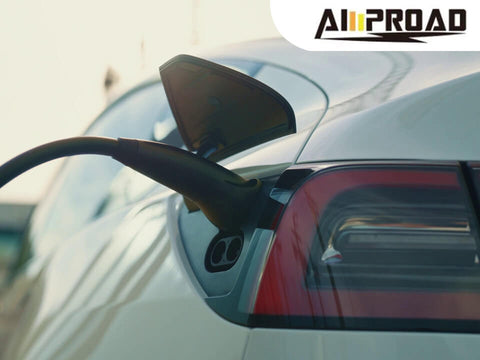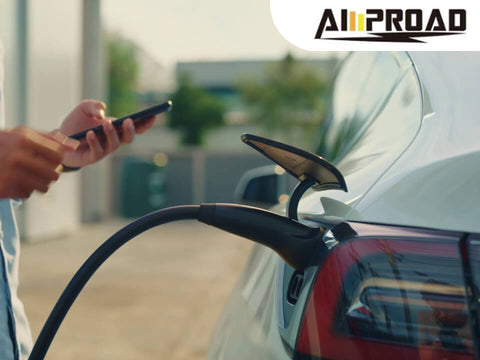
The typical charging time for electric vehicles (EVs) at public charging stations varies based on several factors. Generally, the time required depends on the type of charging station and the EV's battery capacity. Level 1 chargers, which are commonly found at homes or workplaces, provide the slowest charging rate, typically requiring several hours to fully charge an EV. Level 2 charger, more commonly found in public places, offers a faster charging rate and can typically fully charge an EV in a few hours, making them suitable for topping up during short stops. On the other hand, DC fast chargers, often located along highways or at specific charging stations, provide the fastest charging rate, capable of replenishing a significant portion of an EV's battery in just 30 minutes to an hour, making them ideal for long-distance travel.
However, it's important to note that these charging times are approximate and can vary depending on the specific EV model, its battery condition, and other external factors such as temperature and charging infrastructure. Additionally, some EVs may have features like regenerative braking or fast-charging capabilities that can further influence the charging time. Overall, understanding the typical charging times for EVs at public charging stations can help EV owners plan their journeys effectively and make informed decisions about when and where to charge their vehicles.
Can I Charge My Electric Vehicle at Home?
Certainly!Charging an electric vehicle (EV) at home is not only possible but also highly convenient. There are primarily two options for home charging: Level 1 and Level 2 charging. Level 1 charging involves plugging your EV into a standard household outlet using the charging cable that typically comes with the vehicle. While this method is the slowest, it's perfect for overnight charging, allowing you to wake up to a fully charged vehicle. On the other hand, Level 2 charging requires a dedicated 240-volt circuit and the installation of a charging station. This option provides faster charging speeds compared to Level 1, making it ideal for those who require quicker replenishment of their EV's battery.
There are numerous benefits to charging your electric vehicle at home. Firstly, it offers unparalleled convenience, allowing you to charge your EV overnight while you sleep or during the day while you're at home. This eliminates the need to make special trips to public charging stations, saving you time and effort. Additionally, home charging often works out to be more cost-effective in the long run, as electricity rates for home charging are typically lower than those for public charging. Moreover, charging at home provides a sense of security and control over your EV's charging process, ensuring that your vehicle is always ready to go whenever you need it. Overall, home charging is a convenient, cost-effective, and hassle-free solution for keeping your electric vehicle charged and ready for your next journey.
Amproad's innovative Level 1 and Level 2 dual-purpose EV charger with adjustable amp ratings, a game-changer in home charging solutions. This cutting-edge charger offers versatility and efficiency, catering to the diverse needs of electric vehicle owners. With the ability to switch between Level 1 and Level 2 charging modes, users can adapt the charging speed to suit their requirements, whether they need a quick top-up or a full charge overnight. The adjustable amp ratings further enhance flexibility, allowing users to customize the charging process to match their specific EV model and battery capacity. This feature ensures optimal charging efficiency while minimizing energy waste, making it an eco-friendly choice for EV owners.
Moreover, the Amproad charger's user-friendly interface and intuitive controls make it easy to adjust settings and monitor charging progress, providing a seamless charging experience. Its sleek and compact design makes it suitable for any home environment, while its robust construction ensures durability and reliability. With Amproad's Level 1 and Level 2 dual-purpose EV charger, homeowners can enjoy the convenience of home charging without compromising on performance or flexibility. Say goodbye to the hassle of searching for public charging stations and embrace the simplicity and convenience of charging your electric vehicle at home with Amproad.

Are Public Charging Stations Commonly Available?
Public charging stations for electric vehicles (EVs) are becoming increasingly prevalent, marking a significant shift towards widespread adoption of electric mobility. Across urban areas, highways, and commercial centers, the sight of charging stations has become more common, reflecting the growing infrastructure to support EV charging needs. This expansion is primarily driven by the concerted efforts of governments, private enterprises, and charging networks to meet the rising demand for electric vehicle charging facilities.
The proliferation of public charging stations is facilitated by the establishment and expansion of charging networks, which aim to provide convenient and accessible charging options for EV owners. These networks strategically deploy charging stations in high-traffic areas, ensuring that EV drivers have easy access to charging facilities during their daily routines and long-distance travels. Moreover, the impact of this expansion extends beyond mere convenience; it plays a crucial role in alleviating range anxiety—the fear of running out of battery power—among prospective EV buyers, thus accelerating the transition to electric vehicles. As public charging infrastructure continues to grow, it not only supports the existing EV population but also encourages more individuals to embrace electric mobility, contributing to a greener and more sustainable transportation ecosystem overall.
How Long Does It Take to Charge an EV at Public Charging Stations?
The time it takes to charge an electric vehicle (EV) at public charging stations varies depending on several factors, primarily the type of charging station and the specific capabilities of the EV being charged. Generally, there are three main types of charging stations: Level 1, Level 2, and DC fast chargers. Level 1 chargers, commonly found in homes and some public areas, provide the slowest charging speed. They typically take several hours to fully charge an EV, making them suitable for overnight charging or extended parking periods. Level 2 electric vehicle charger, which is more prevalent in public locations, offer faster charging speeds compared to Level 1. They can fully charge an EV in a matter of hours, making them ideal for topping up during shorter stops, such as while shopping or dining. On the other hand, DC fast chargers are designed for rapid charging and are typically located along highways or at specific charging stations. These chargers can replenish a significant portion of an EV's battery in as little as 30 minutes to an hour, making them suitable for long-distance travel or quick charging needs.
Several factors influence the charging time at public stations. The primary factor is the charging infrastructure itself, including the power output of the charging station and its compatibility with the EV's charging capabilities. Additionally, the EV's battery capacity and state of charge play a significant role in determining the charging time. Other factors such as temperature, charging session duration, and charging network congestion can also impact the overall charging speed. By considering these factors, EV owners can better plan their charging stops and optimize their charging experience at public stations.
For example, With an electric capacity of 60 kWh and a charging rate of 100 kW at the DC charging station, the time it takes for the electric car to be completely charged can be calculated. Using the formula for charging time, which is the battery capacity divided by the charging rate, we find:
Charging Time= 60kWh/100kW=0.6hours
Converting this to minutes, since 1 hour equals 60 minutes:
Charging Time=0.6×60=36minutes
Hence, it would take approximately 36 minutes for the electric car to be fully charged at the DC charging station.

How Can I Ensure I'm Not Waiting Too Long to Charge My EV?
Several factors influence the charging time of electric vehicles (EVs), ranging from the type of charger used to external conditions. One significant aspect is the charger type itself. For instance, Level 1 EV chargers typically offer slower charging speeds compared to Level 2 chargers, while DC fast chargers provide the fastest charging rates. Additionally, the specific EV model plays a crucial role, as different models may have varying battery capacities and charging capabilities. Furthermore, external factors such as temperature and charging network congestion can also impact charging time, with extreme temperatures potentially affecting battery performance and crowded charging stations leading to longer wait times.
Understanding these factors is essential for EV owners to optimize their charging experience effectively. By choosing the appropriate charger type, such as a charger level 2 for faster charging at home or public stations, they can minimize charging time while maximizing convenience. Moreover, being aware of the charging capabilities and limitations of their EV model allows owners to plan their charging stops more efficiently, ensuring they can recharge when needed without unnecessary delays. Lastly, considering external factors like weather conditions and peak charging times can further help EV owners streamline their charging routines and make the most out of their electric driving experience.
What Are Some Considerations for EV Charging Convenience?
When talking about the electric vehicle (EV) charging, convenience is key. Considering factors that enhance charging convenience can significantly improve the overall EV ownership experience. Home charging solutions emerge as a primary consideration, allowing EV owners to charge their vehicles conveniently overnight or during periods when the vehicle is not in use. Installing a Level 2 EV charger at home provides faster charging speeds compared to standard household outlets, ensuring that the EV is ready to go whenever needed. This convenience eliminates the need for frequent visits to public charging stations, including the Tesla destination charger, and allows for seamless integration of charging into the daily routine of EV owners.
Moreover, exploring off-peak charging options can further enhance convenience and potentially reduce charging costs. Off-peak charging refers to charging the EV during times when electricity demand is lower, typically during late at night or early morning hours. Many utility providers offer discounted electricity rates during off-peak hours, incentivizing EV owners to charge their vehicles during these times. By taking advantage of off-peak charging rates, EV owners can save money on their electricity bills while avoiding peak charging times when public charging stations may be busier. Additionally, scheduling charging sessions during off-peak hours can help alleviate strain on the electrical grid, contributing to a more sustainable energy usage pattern overall. Considering these factors and exploring home charging solutions and off-peak charging options can greatly enhance the convenience and efficiency of EV charging, making electric mobility a more accessible and practical choice for drivers.


